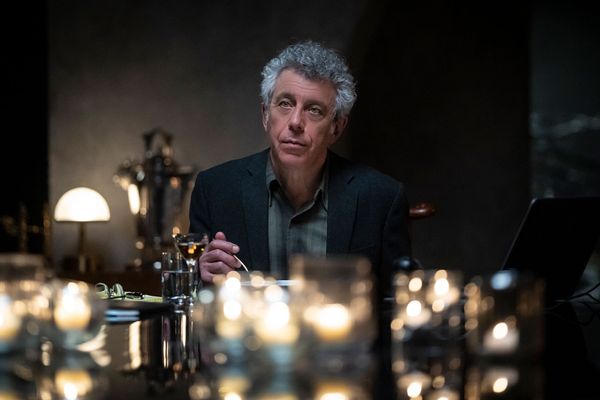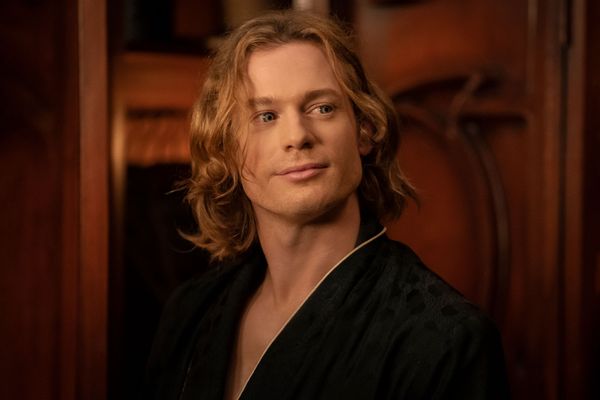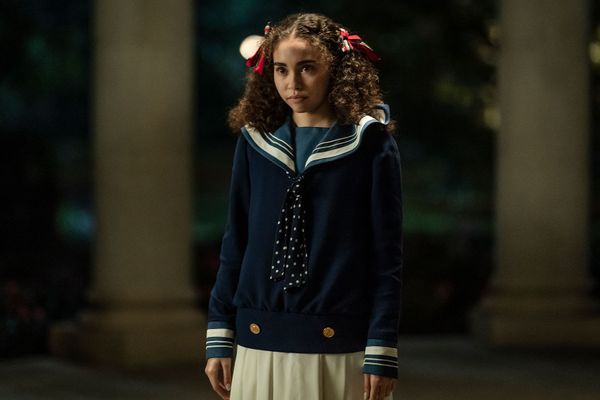
When megastar Tom Cruise was first cast as the legendary vampire Lestat, writer Anne Rice initially expressed disappointment. Based on her 1976 novel "Interview with the Vampire," the 1994 movie version went on to become a box office success and win several Oscars — and Rice later praised both Cruise's performance and Brad Pitt's as Louis, an 18th century lord who is made a vampire by Lestat.
Just in time for spooky season, there's a new vampire in town. Or rather, a very old one given new life. AMC has adapted the book from the queen of the goths, this time in a series. Though Rice passed away in 2021 and will not be able to weigh in on the casting, AMC has already renewed the show for a second season.
Didn't we already do this story? Not like this. Salon sinks our teeth into what to expect from the new series and how it differs from the film.
An aged interviewer
The 1994 film starts with reporter Daniel Molloy in present-day San Francisco interviewing the enigmatic Louis de Pointe du Lac, who swears he's a vampire. What a get, for a journalist. Christian Slater plays Daniel in the film: a young, rash reporter. In AMC's series, Daniel is back, this time played by Eric Bogosian. The character is the same but he's aged, jaded. And ill at a time when a pandemic is raging outside. This "Interview with the Vampire"? it's just like us. And this interview? It's the second time around. Daniel is interviewing his subject again, decades later, hoping to get the truth this time.
On a recent Television Critics Association press tour panel, Bogosian spoke about his older character: "It means that when Daniel/me goes after the story, it's with a lot more experience, savviness, and I think a certain – well, just knowing how to get the story, how to cut through any kind of duplicity that Louis may be throwing my way."

We've seen Lestat and Louis before, but the new series will show them steamier than we know the vampires, with more sex and sexuality. The New York Times wrote, "The series doesn't just adapt the novel; it fundamentally alters it, shifting the central timeline forward by over a century, exchanging the book's suggestive homoeroticism for outright gay sex."
"The sucking blood business is even more intimate."
Although the characters in the novel are not explicitly queer, over the years they have become implicitly so, prompted in part by Rice herself. In 2016 the writer told The Daily Beast, "People told me 'Interview with the Vampire' was a gay allegory, and I was very honored by that. I think I have a gay sensibility and I feel like I'm gay, because I've always transcended gender, and I've always seen love as transcending gender." Gayming wrote, "Since the 1970s, Rice had incorporated queer characters and feelings into her stories. 'Interview with the Vampire' is particularly interested in male-male desire."

The increased sex scenes also meant the use of intimacy coordinators, something the show was praised for early on. Sam Reid – who plays the updated Lestat opposite Jacob Anderson's Louis – said, "We worked with an intimacy coordinator quite extensively . . . I think it's important, and it treats those scenes a bit more like a stunt scene or a fight scene so they're properly choreographed as well as trying to keep some spontaneity in it."
Bogosian added, "The sucking blood business is even more intimate. You know, because like sex we kind of know what it is . . . But [the] experience of actually sucking blood out of a throat. I've seen them doing it and you get really close and it's intense."
Extra gore and violence
While ramping up the sex, and making sexuality not something to dance around but something to show openly, the new series also takes a different approach to violence. Gizmodo wrote, "Any point, where it had to make choices, it made the most choice possible. The decisions are extra, dramatic, over the top, extreme, gory, and flamboyant." Their review also described the show as "visceral" and "soaked in blood." Vampires kill, after all, and alter lives forever.

Along with a changed and older Daniel, the series takes liberties with the beloved character of Claudia (Kirsten Dunst in the film, in a life-changing role), aging her to 14 when she's turned into a vampire. Bailey Bass plays Claudia in the show. In the book, Claudia is quite young. In the movie, the character is aged a bit as Dunst played her at 11. The series chose to age Claudia a little more for reasons both practical (the difficulty of having a child actor look the same across seasons) and for the possibilities of story.
Jones said on the panel, "We thought there would be a third way to go about this and that is to lock Claudia sort of in the chemistry of a 14-year-old, the body chemistry of that and all the fluctuations and passions that happen . . . I think Bailey's done a really remarkable job of giving this third version of Claudia."
"He's somebody that to some extent feels cheated I think in this human existence."
Both Claudia and Louis are Black in the series, another departure from the novel that gives the show a chance to explore characters of color navigating the American South in the 1900s. At the panel, Bass said, "We do touch upon what it means to be a Black woman, but also a Black child in that time. It was interesting doing research for Claudia being a Black child because there's not much research to be found, so we kind of had to create it on our own from what we had. You can see a lot of pictures of Black women, but not necessarily Black children who were to a wealthier family."
Director and executive producer Alan Taylor also spoke on the panel about Louis being Black: "There's also another layer because Louis was not from the streets. Louis was from a fairly well-to-do family, and it's a part of Black history that doesn't get represented that much. So already him going to the streets and becoming a tough guy who could hold up his own in the business he's in was a bit of a performance for him . . . layers in Louis even in the early part of the story that then just deepen over time as he becomes deeper."
When asked on the panel "where the hell" the rage in Louis comes from, Jacob Anderson, said, "In me. I think he's somebody that to some extent feels cheated I think in this human existence. I think he can't quite find his place."
One thing is certain. This "Interview with the Vampire" seems to have found a new place in the rich history of vampire stories.
"Interview With the Vampire" premieres Sunday at 10 p.m. on AMC. The first episode is currently available on AMC+







